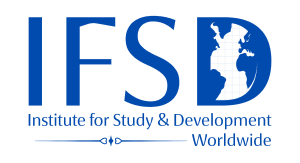In recent decades, wildfires have become more frequent, widespread, longer lasting, and intense, wreaking havoc across the world. 2021 was the year of catastrophic wildfires, with several countries experiencing a record-breaking wildfire season. A big contributing factor is human-caused climate change which has created even warmer and drier conditions.

Under rapidly changing climate, developing countries in the Global South are increasingly experiencing extreme wildfires. The annual occurrence of forest fires in Nepal has posed a great threat to the country’s forest cover. The existing policy, institutional, and technical capacity gaps, have further made it difficult to implement effective fire risk management strategies in Nepal.
Australia has extensive experience working on fire risks, as bushfires are common and widespread due to the hot and dry climate. Over the years, continuous efforts have helped them build their bushfire resilience. In fact, Northern Australia has one of the world’s best fire management system that is being championed by Indigenous land managers. As IFSD emphasizes knowledge sharing, this seemed like a perfect opportunity to facilitate collaboration between Australia and Nepal.
To explore cross-country collaboration between Australia and Nepal to build Nepal’s fire resilience, the IFSD team spoke to Dr. Tony Bartlett, Australian fire expert with many years of experience of working in Nepal. He is the Managing Director of Bartlett Forestry Consulting Pty Ltd. He has 47 years of experience working in Australian and international forestry.
In this interview, he offered insights on Australia’s ongoing efforts to advance bushfire risk management systems, lessons from Australia’s fire risk management practices that Nepal can learn, and how fire risk management can be integrated by Australian organization working on international development in South Asia.
How do you see Australia advancing bushfire risk management systems and arrangements after 2019 catastrophic fires?
Australia has begun to understand that as a result of climate change the frequency and severity of severe bushfires will increase in many areas, including the extremely fire-prone areas of south-eastern Australia. Governments have a significant role in bushfire mitigation, preparedness, response and recovery activities and these activities will need increased resources to manage the increased risks. Importantly, we need to build the capacity of communities to prepare for, adapt to, and recover from natural disasters such as bushfires. After identifying those areas that are at most risk from severe bushfires, we then need to improve planning requirements for new dwellings and infrastructure to ensure they are more resilient to bushfires.
We need to increase the use of techniques that either strategically reduce the fuel in forest areas or increase the capacity for quick suppression of bushfires when they occur.We need improved data capture and fire behaviour modelling as well as communication systems to provide more reliable and timely information to communities when bushfires occur. We also need to increase the number and capacity of firefighters and build community capacity capable of better protecting urban and rural assets at risk during bushfires.
Australia is working on improving many components of its bushfire risk management system at both the national and sub-national levels, with many of these strategies being undertaken in a co-ordinated manner through intergovernmental bodies, such as the Australasian Fire Authorities Council, and collaborative initiatives, such as the Bushfires and Natural Hazards Cooperative Research Centre.
We are strengthening our capacity at the national level to enable better sharing of skilled people and resources, including aerial firefighting capabilities, when disasters occur. We also need new approaches to enhance recovery activities in order to lessen the long-term impacts on both communities and forests impacted by high-intensity bushfires.

How would you summarise Australia’s key fire risk management achievements over the past two decades, especially after the 2009 Black Saturday?
Australia’s approach to reducing the risks of the occurrence of damaging wildfires and their impacts on communities, infrastructure, and forest ecosystems has been evolving continuously over the past 40 years. Some of the key improvements are:
- Recognition that reducing the negative impacts of severe bushfires requires implementation of holistic risk-based management approaches conducted at a regional scale across all land tenures.
- Adoption of the Incident Control System for all natural hazard disasters, including building capacity to fill key positions in the Incident Management Teams.
- Preparation of strategic bushfire management plans and implementation of annual bushfire risk mitigation activities.
- Greater use of technology to provide up-to-date information of wildfire location in the landscape linked with improved ability to model expected fire spread patterns given forecast weather.
- Improved firefighting equipment and safety procedures for ground-based firefighters coupled with increased capability to deploy aerial firefighting resources to support the ground crews.
- Significantly improved communications systems both within emergency management agencies and for distribution of information to members of the community.
- Changes to urban planning regulations to improve the resilience of new dwellings to bushfires and the establishment of community fire units in high-risk urban interface locations.
What can Nepal learn from Australia’s fire risk management systems and practices? Of course, Nepal’s situation is different from Australia, do you still see value in investing in Nepal-Australia knowledge sharing on fire risk management?
Many developing countries are facing increased occurrences of larger and more severe wildfires that has caused significant damage to farmlands and dwellings in rural areas. The causes of these wildfires and the capacity of the country to manage them may well be quite different to that of Australia.
However, there is a lot to be gained by improving understanding of Australia’s risk-based approach to bushfire management and then assisting a partner country to adapt the most relevant components of Australia’s system to their local situation. For example, systematically identifying the locations and causes of unplanned fires and identifying the locations at most risk from increased wildfires can help a country to prioritise where to focus its efforts initially.
Australia has a very long history of building volunteer capacity within local communities which can then take action to combat unplanned fires. Some of the principles of that approach would have high relevance in rural parts of Nepal. While the topography in Nepal is quite different to that of Australia, there may be merit in attempting to develop both a Fire Danger Rating System and a Fire Behaviour Model appropriate to Nepal.

Given your rich and extensive international development experience, how can fire risk management agenda be integrated in international development practice of Australian organisations working in Nepal and more generally South Asia?
Australian development agencies base their strategic priorities on development issues identified through global and national forums. Many of the components of the UN’s Sustainable Development Goals are inter-linked with disaster risk management. For example, efforts at enhancing food security and rural livelihoods can quickly be negated by the unplanned impacts of fire as it destroys crops, livestock, or longer-term investments such as trees on farms and community lands.
There are increasing examples of houses, community facilities such as schools or temples being destroyed by wildfires. Therefore, it is important that donor development programs also fund activities that enhance long-term capacity and resilience of communities to reduce the impacts from natural disasters such as unplanned fires.
When financial resources are limited in developing countries, it is critical to reduce the likelihood of major investments being wasted as a result of unplanned fires. Governments should include disaster risk reduction activities amongst their national development priorities and ask the donor countries for appropriate assistance to build their disaster risk management capabilities.
Bio note
Dr Tony Bartlett has worked in Australian and international forestry for 47 years and is currently the Managing Director of Bartlett Forestry Consulting Pty Ltd. He has worked in a wide range of forestry roles for the Commonwealth, ACT and Victorian governments in Australia and on forestry development projects in Nepal and Vanuatu. From 2010 until 2018, he was the Forestry Research Program Manager at the Australian Centre for International Agricultural Research Centre (ACIAR) managing 25 projects located in 14 developing countries across southern Africa, South Asia, South-east Asia and the Pacific Islands. He has extensive experience in forest fire management, including risk-reduction-based planning and senior operational roles in the suppression of large wildfires. He has authored several research papers and analytical reports on management and impacts from large wildfires in Australia. In 2020 he led a FAO funded technical cooperation project to study the key drivers of fire incidence in Timor-Leste. He has a PhD from the Australian National University, a MSc from Oxford University and a B. ForSci from University of Melbourne. He was awarded an Australian Fire Service Medal in 2006.
Expert Viewpoint series is edited by Priyanka Gurung and Purnima Banjade. If you have any suggestions on what should be covered in this series, please let us know at info@ifsd.com.au
Views and opinions mentioned here are those of the experts and in no way reflect the views and positions of IFSD. These views are meant for general advice and informing public debates around the challenges, and do not represent any legal or problem-solving advice. Neither IFSD nor any of the individuals associated with this post will take any responsibility from any loss resulting from the use of information published here.

